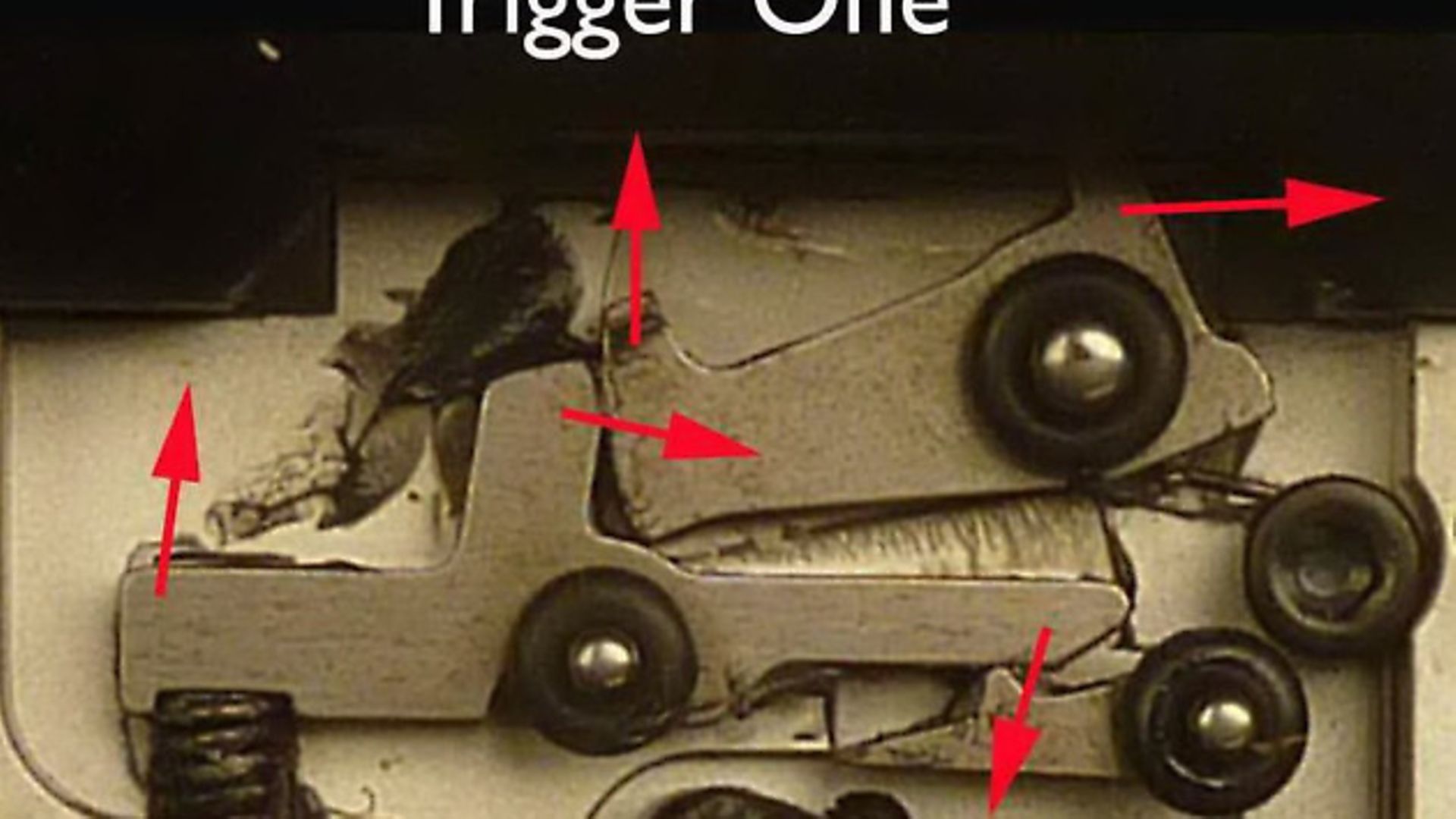Last month, I answered a question about adjusting the Air Arms S510 trigger, and this month we’ll take a closer look inside, to see how it works
 credit: Archant
credit: Archant
A trigger unit is a system of levers. At one end, a lever restrains the piston in a springer, or the hammer in a PCP, and at the other end, a lever (the trigger blade) responds to pressure from the trigger finger. Somewhere in between are the sears, which are two flat faces made of hardened steel. One sear is connected via levers to the trigger blade, and slides over the other as the blade is operated, until the two separate, freeing the other sear, and the levers connecting it to the piston or hammer.
Let’s look at the four-lever Air Arms trigger in operation. The photograph ‘Trigger One’ shows the trigger unit at rest, and the arrows indicate the direction in which the levers will move as the rifle is cocked. The top lever pivots in a clockwise direction, until it is clear of the upright arm of the upper middle lever, which is then able to pivot in a clockwise direction underneath the front of the top lever, locking it in position.
 credit: Archant
credit: Archant
The photograph ‘Trigger Two’ shows the cocked trigger unit. The top lever is locked by the upper middle lever, which has pushed the lower middle lever down to contact the first-stage trigger pull adjuster. The arrows show the direction in which the levers will move when the trigger blade is moved backward.
If you look at the front adjuster screw, you will see that it controls not only the length of the first stage of trigger pull, but also the degree of sear overlap; screwing it too far in could reduce the sear overlap to dangerous levels so unless you really know what you’re doing, best leave the adjustment screw alone.
The photograph ‘Trigger Three’ shows the trigger just before the sears disengage. The second-stage adjuster is nearer to the pivot of the lower middle lever, which increases the pull weight fractionally, the moment it makes contact, to let the user know that the sears are on the verge of disengagement, and that any further movement of the trigger blade will disengage the sears and the rifle will fire.
 credit: Archant
credit: Archant